
Tabanus bromius, sometimes called the band-eyed brown horsefly, is a species of biting horseflies.

Athericidae is a small family of flies known as water snipe flies or ibis flies. They used to be placed in the family Rhagionidae, but were removed by Stuckenberg in 1973. They are now known to be more closely related to Tabanidae. Species of Athericidae are found worldwide.

Atherix marginata, the black-legged water-snipefly, is a species of ibis flies belonging to the family Athericidae, a small family very similar to the Rhagionidae.

Chrysopilus asiliformis, the 'little snipefly', is a species of 'snipe flies'.

Chloromyia formosa is a species of soldier flies belonging to the family Stratiomyidae. Another name for it is Broad centurion.

Haematopota pluvialis, the common horse fly or notch-horned cleg fly, or simply cleg in Scotland and northern parts of Ireland, is a species belonging to the family Tabanidae subfamily Tabaninae.
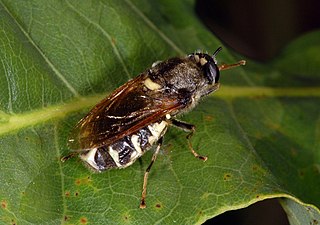
Stratiomys singularia, the flecked general, is a Palearcticspecies of soldier fly.

Sargus bipunctatus, the twin-spot centurion, is a European species of soldier fly.

Pachygaster atra, the dark-winged black, is a European species of soldier fly.

Beris chalybata, the murky-legged black legionnaire, is a European species of soldier fly.

Beris clavipes, the scarce orange legionnaire, is a European species of soldier fly.

Chrysops caecutiens, common name splayed deer fly, is a species of horse fly belonging to the family Tabanidae. It is also known by the colloquial name Scotch Cleg.
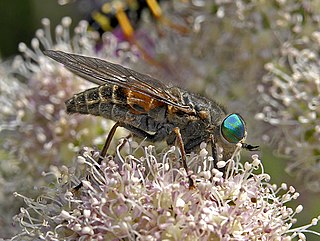
Hybomitra montana, the slender-horned horsefly, is a species of horse flies in the family Tabanidae.

Atherix is a genus of 'ibis flies' belonging to the family Athericidae, a small family very similar to the Rhagionidae. Species within this genus are present in most of Europe and also in the Nearctic realm.
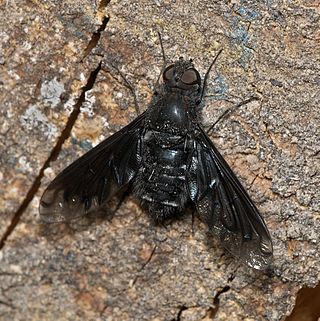
Anthrax anthrax is a species of fly in the family Bombyliidae. Unlike, for example, Bombylius major, this species does not mimic a bee. The eggs are flicked by the adult female toward the entrance of the nests of mason bees. After hatching, the larvae find their way into the nests to feed on the bee larva. A. can be found in May to August throughout mainland Europe. In the Netherlands A. anthrax is a common visitor of insect hotels. It was first recorded as breeding in Britain in 2019.

Villa modesta is a species of fly in the family Bombyliidae. The larvae may feed on larvae of Lepidoptera.

Xylophagus ater is a species of awl fly belonging to the family Xylophagidae found in Central Europe and North Europe.
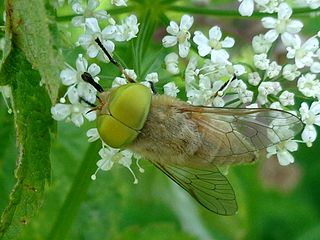
Atylotus fulvus is a species of 'horse flies' belonging to the family Tabanidae.
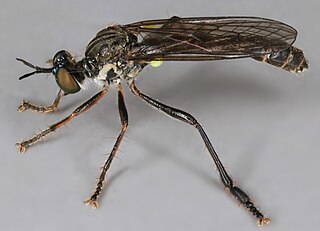
Dioctria hyalipennis is a Holarctic species of robber fly in the family Asilidae.

Villa cingulata is a Palearctic species of bee fly in the family Bombyliidae.




















